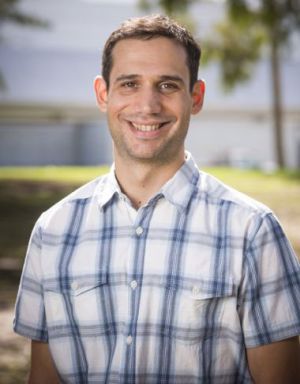Broader impacts support program
What are broader impacts?
Many sponsors require grant applicants to make a “broader impact” with their research, indicating how their research will benefit society or advance desired societal outcomes. Those outcomes include, but are not limited to:
- full participation of women, persons with disabilities, and underrepresented minorities;
- improved education and educator development at any level;
- development of a diverse, globally competitive workforce; and
- increased public engagement.
Broader impacts success spotlight
The Plotkin group studies the radio emissions from intermediate mass black holes to determine how and at what rate they may grow into super massive black holes. To introduce this type of research to K-12 students and increase their interest in STEM, Rich Plotkin leveraged two critical partnerships.

Working with NevadaTeach, an on-campus program, Rich and his graduate students had the necessary support to develop three level-appropriate high school classroom modules: introducing gravity and black holes, familiarizing students with the use of telescopes, then exercises to interpret observational data.
Rich decided that it made sense to conduct black hole observations in the vicinity of the Great Basin Observatory. The added benefit would be bringing these STEM resources to rural students in Nevada; he had data to support the fact that students in this area of Nevada are underrepresented in higher education. Rich determined that a partnership with the nonprofit Reach for the Stars made the most sense for taking the modules into rural classrooms near the great Basin Observatory because Reach for the Stars was already reaching over 1,000 students a year in eastern Nevada.
The National Science Foundation funded this research, impressed with not only its scientific merit, but Rich’s thoughtful approach to sharing his research with rural students in Nevada.
Why does it matter to make a broader impact and promote equitable and inclusive research?
For more information about broader impacts and the importance of research outreach for a couple of selected federal sponsors, read about recent efforts, new policies, and merit review criteria at the National Science Foundation and the Department of Energy.
- National Science Foundation’s Broader Impacts
- Department of Energy’s Promoting Inclusive and Equitable Research (PIER) plans
What broader impacts plans make sense for me and my research?
The best broader impacts plans are thoughtfully tailored, based on “who needs to know about your research” and your personal interests and previous experiences. You will make the most lasting impact if you work towards a long-term broader impacts goal throughout your career. To discuss these big decisions and develop your “broader impacts identity,” Research & Proposal Development Services is here to support you. We have been trained to conduct consultations with you. Please fill out our request form and select the option for broader impacts plans.
Sponsors encourage the use of existing resources in developing broader impacts plans. Think about your existing networks and professional or extracurricular organizations you may belong to. Research & Proposal Development Services has developed relationships with organizations on campus and in our community that faculty can leverage to create and carry out their plans. These include:
- outreach and educational programs for K-12 students and teachers;
- opportunities for undergraduate and graduate students to participate in research and educational projects;
- platforms for faculty to widely disseminate their results; and
- workshops, conferences and lecture series.
Contact us for suggestions about, and introductions to, broader impacts activities and partners.
How should I approach a potential outreach partner?
Partners can help you understand the needs of your target audience, and also help you reach that target audience. Here are some best practices for approaching a potential partnership:
- Remember that the best partnerships provide mutual benefit. Take the time to learn about the goals and unmet needs of your potential partner to determine if your outreach project is of benefit to them or to their constituents. Make a plan together that works within their existing structures and constraints and meets both of your needs.
- Be open to performing some service to the partner organization outside of what you are writing into a grant. It’s a way to get to know the staff and constituents of the partner organization and shows that you are entering the partnership in good faith. When it’s time to write a broader impacts plan for your next grant, you will have a much better sense of what kind of projects might best convey your research to the target audience.
- Think about the partnership as being a long-term one, developed over the course of your career as a researcher. To create a lasting and meaningful partnership, be respectful. Instead of asking for a letter of support in a rush before a grant deadline, send a copy of the proposal text about the partnership and a mostly complete template for the letter well in advance. Instead of disappearing after the grant is submitted, update the partner on the review status. If the grant is awarded, celebrate and publicize the partnership together. If the grant is not funded, stay engaged with the organization and share your resubmission plans.
Can I get help in writing broader impacts sections of my proposal?
Yes! Research & Proposal Development Services is here to help. We have examples of successful broader impacts plans in our Proposal Library. Request a sample proposal.
We also highly recommend the use of the NSF-sponsored ARIS broader impacts toolkit and the broader impacts wizard. This is a set of free and downloadable checklists and tools for conceptualizing and writing a broader impacts section that meets sponsor requirements.
Research & Proposal Development Services has been trained to use these tools, so contact us for support along the way.